Paper Chromatography
This is a science experiment about color that we have been fascinated with.
When you mix colors with colors, you create other colors. For example, red and blue make purple, yellow and red make orange, and so on. So what about the opposite? What color is green made of? What about black? Let’s visualize the answer to that question.
The method of separating pigments using paper is called Paper Chromatography. Using this principle, we can separate the pigments of water-based pen inks. When we experimented, a beautiful gradation pattern like a spark of a firework appeared. There is a reason for this. The observation results of the experiment are explained at the end of this article. Please enjoy watching the ink absorb water.
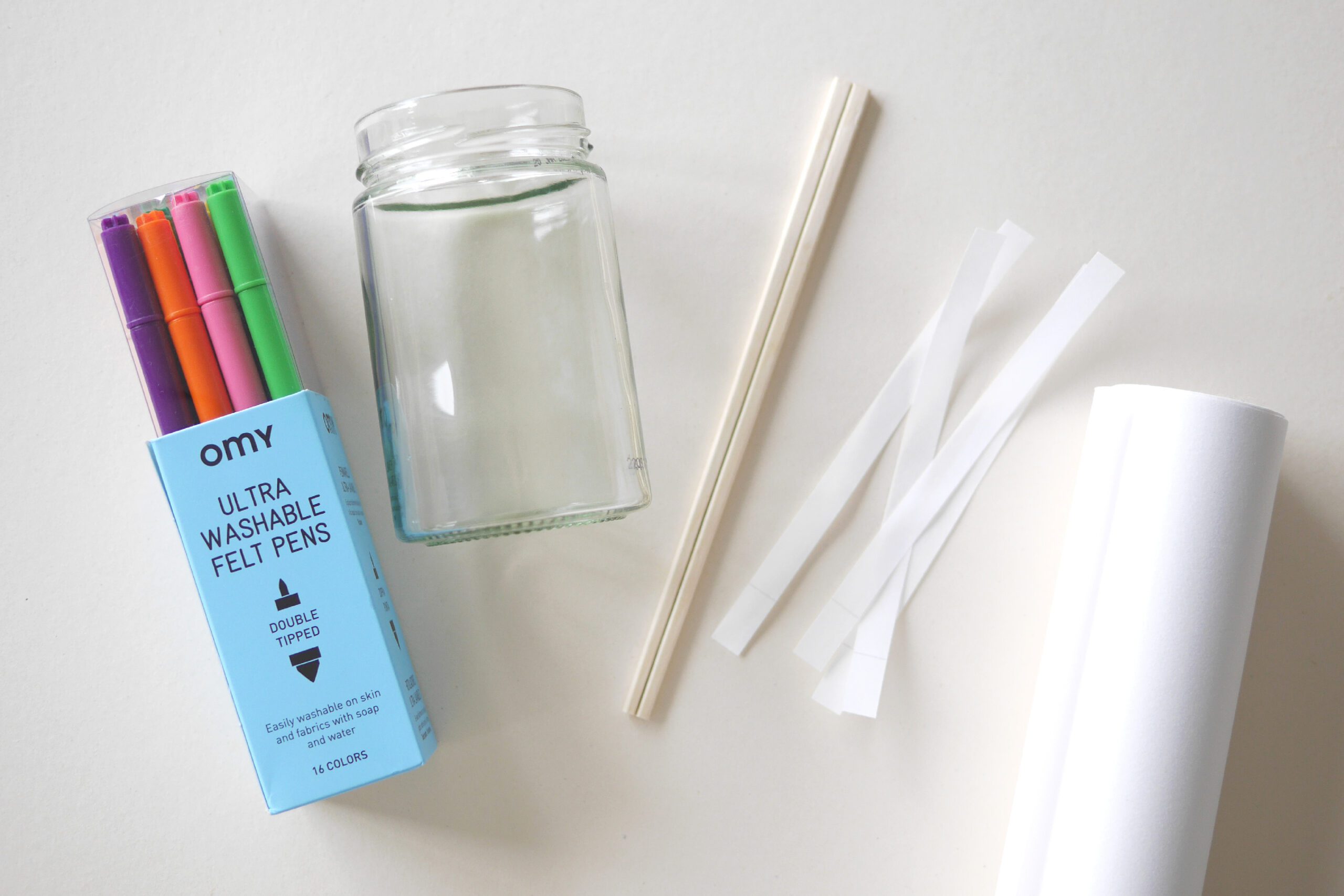
Materials
– Calligraphy paper or coffee filter *Cut into 1×15cm pieces
– Water-based pan
– Disposable chopsticks
– Glass jar or cup
– Water
Instructions for making
Step 1. Experiments in Color Decomposition 1
Cut a piece of paper such as calligraphy paper or coffee filter into thin strips about 1 x 15cm. Write a dot of about 2mm with a water-based pen about 2 cm from one bottom. It is helpful to mark which color you used on the other end with the same pen.
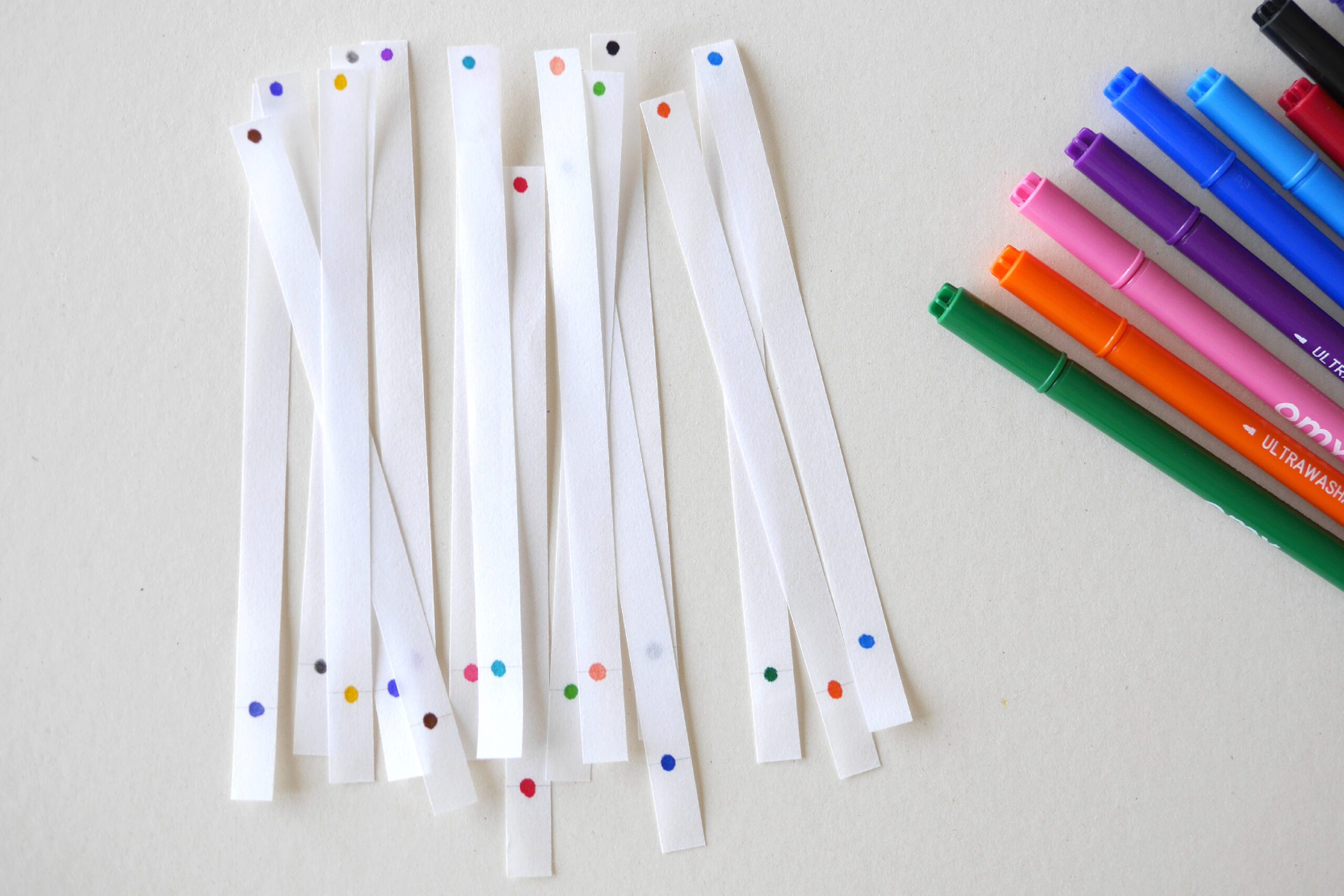
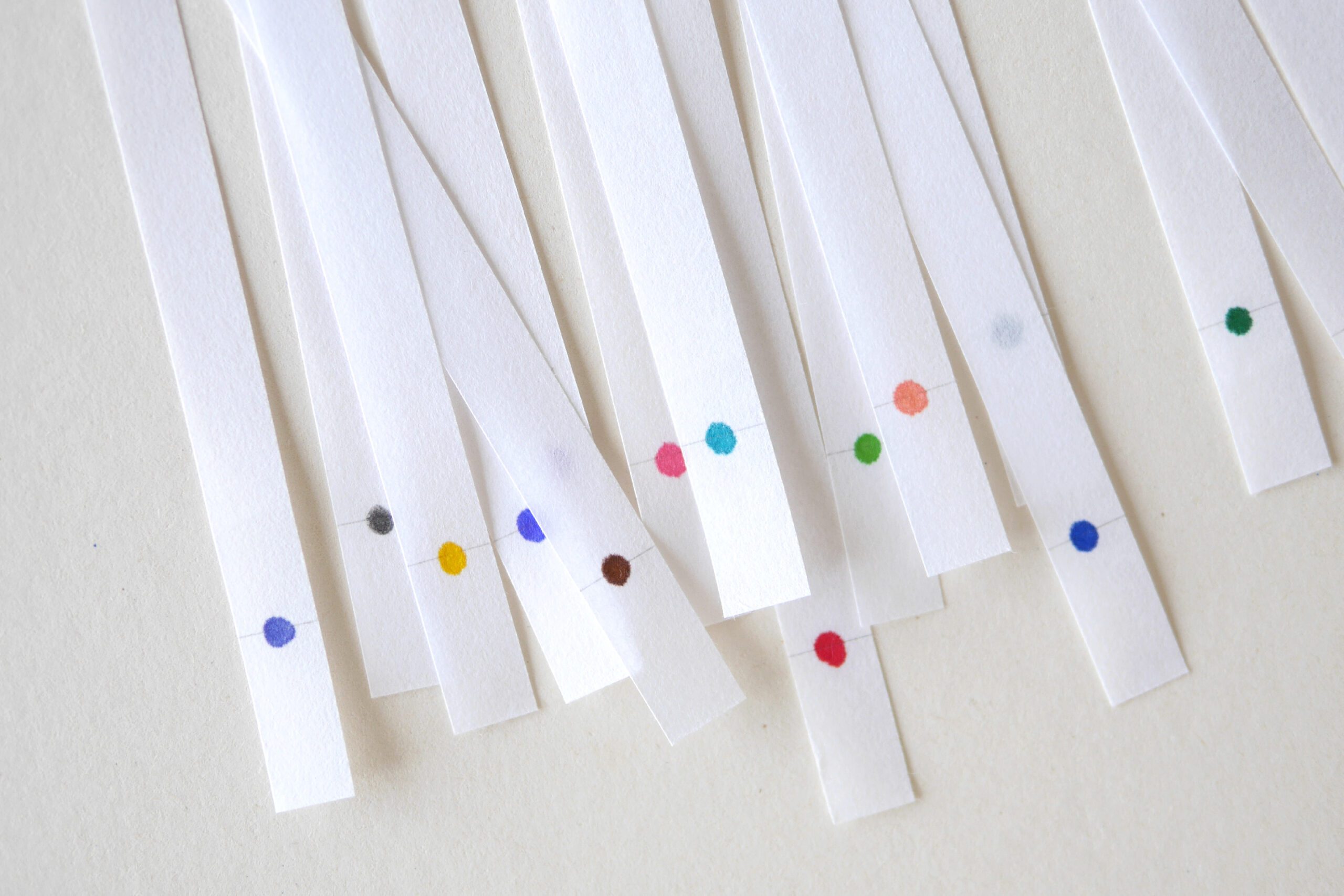
Step 2. Experiments in Color Decomposition 2
Fill a glass jar with 1cm of water. Place the tip of the paper from step 1 between disposable chopsticks and dip it in the underside into the water. The key point is to avoid getting water directly on the ink.
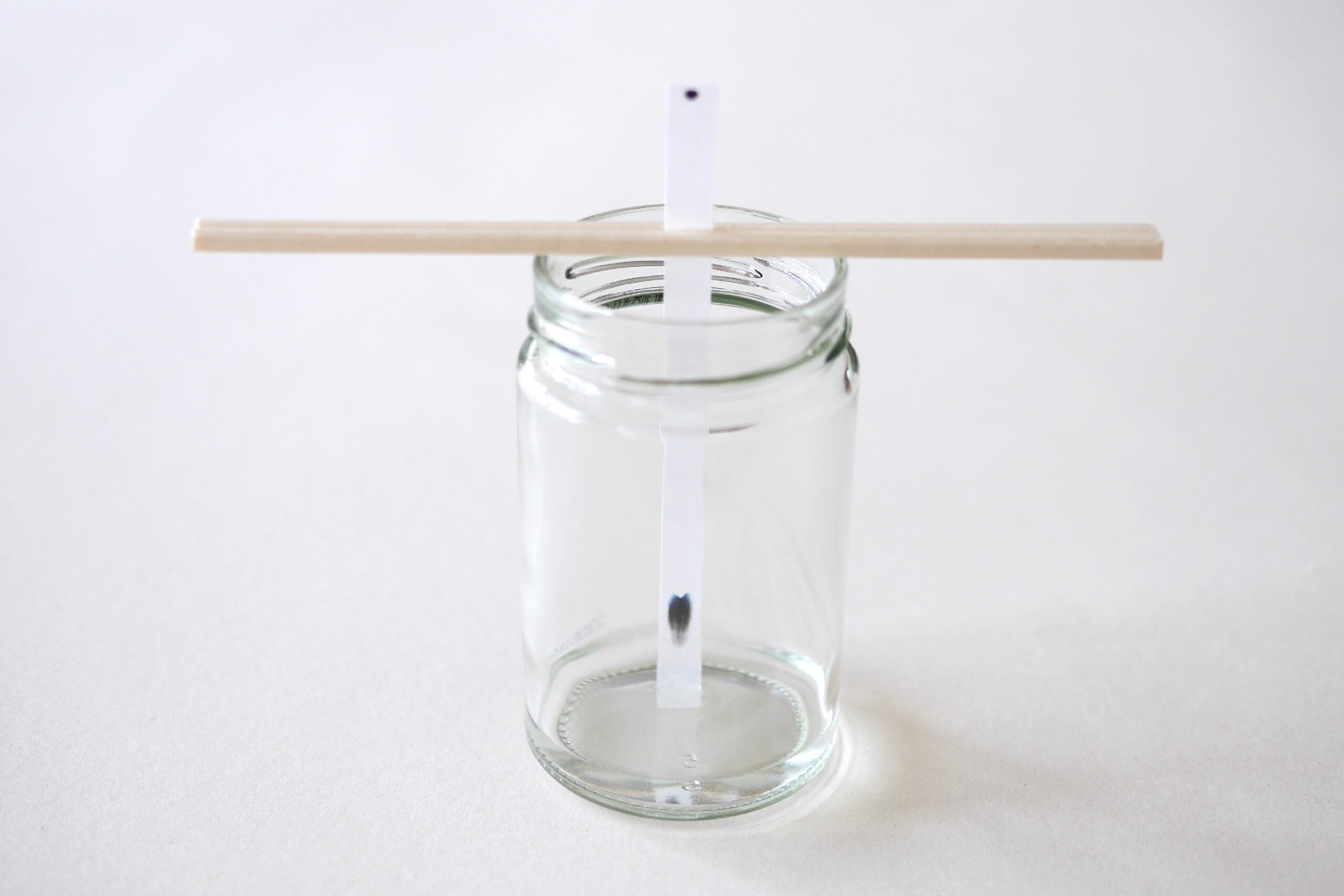
Step 3. Observe
Observe how the paper soaks up the water and the ink flows through it. For about 5 minutes, then lift the paper out of the water and let it dry.


Step 4. Observation Results
Let’s take a look at the results of our experiment. This time we used OMY’s 16-color water-based pens to create a 16-color sample.
You can see the ink trails on the paper. It is obvious at a glance which color the ink is made off. Upon closer inspection, there seems to be a difference in the distance that each dye flows.


Step 5. Comparison of Each Color
Let’s compare the colors. In all colors, yellow, orange, and pink stop first, and blue extends beyond them. This is because some pigments tend to flow into water and others stop on paper. We can see that orange and pink are colors that stop on paper, while blue is a color that flows into water.
We also found that yellow, red, and blue are unmixed and monochromatic colors.
*Because different manufacturers of water-based pens use different ink formulas, the same color can produce different results.
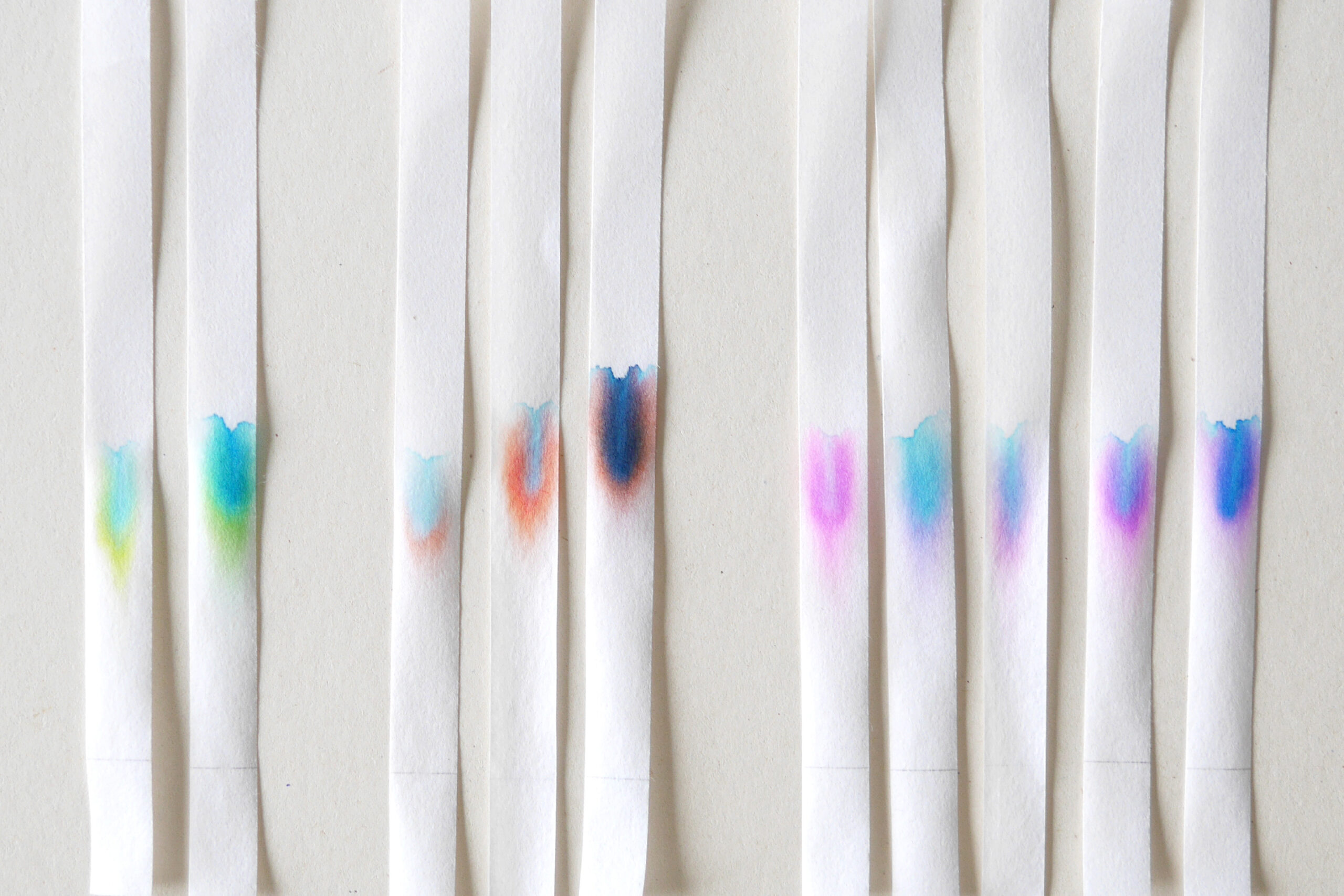

Fireworks Card
We made a small card using the principle of paper chromatography. Using circular filter paper and water-based pens, we made a beautiful card that looks like a firework burst. I will show you how to make it next time.
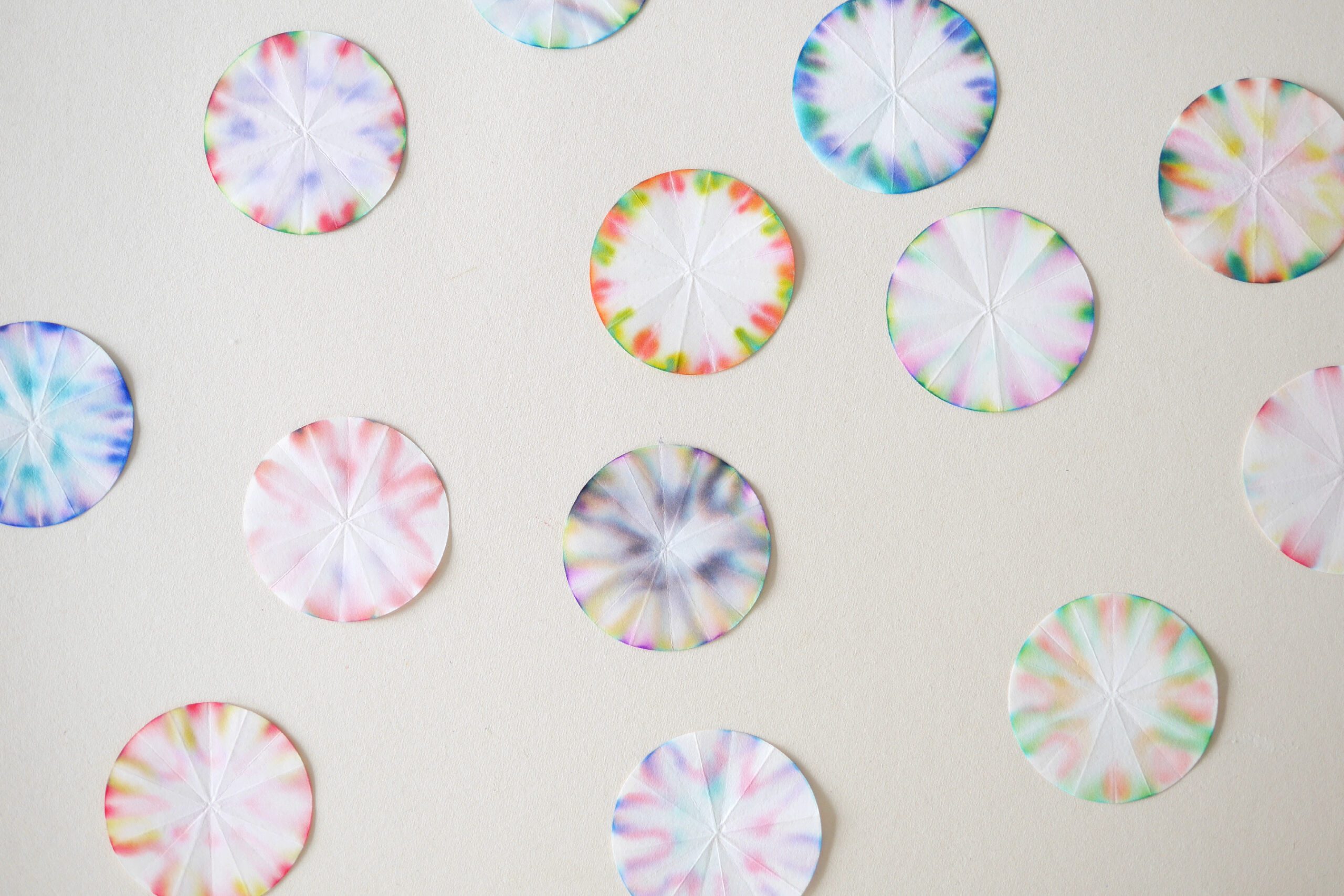
Paper Chromatography
これは私たちが夢中になった色にまつわる科学実験です。
色と色を混ぜると、他の色が生まれます。例えば、赤と青で紫、黄色と赤でオレンジ、というように。では、その逆はどうでしょう。緑は何色からできているのでしょう。黒はどうでしょう? その答えを可視化してみましょう。
紙を使って色素を分ける方法をPaper chromatographyいいます。その原理を使って、水性ペンのインクの色素を分けます。すると花火の火種のような美しいグラデーションの模様が現れました。これには訳があるのです。観察結果とともに、最後に解説していますので、まずはインクが水を吸い上げていく様子を見て楽しんでください。

用意するもの
– 半紙、障子紙、コーヒーフィルターなど 1cm×15cmに切る
– 水性ペン
– 割り箸
– 瓶 または コップ
– 水
つくりかた
Step 1. 色の分解の実験 1
半紙、コーヒーフィルターなどの紙を1cmx15cmほどに細長く切ります。ここでは障子紙を使いました。片方の端から1〜2cmほどの場所に、水性ペンで2mmくらいの点を書きます。反対の端にはどの色を使ったのか同じペンでマークしておくと親切です。


Step 2. 色の分解の実験 2
瓶に1cmほどの水を入れます。Step 1の紙の先端を割り箸で挟んで水に付けます。ポイントは、インクには直接水がつかないようにすること。

Step 3. 観察する
紙が水を吸い上げてインクが流れる様子を観察しましょう。まるで花火の火種のように、みるみるとインクが上へ移動していきます。5分ほど観察し、紙を水から上げて乾燥させます。


Step 4. 観察結果
観察の結果を見てみましょう。今回私たちはomyの16色の水性ペンを使い16色のサンプルをつくりました。
紙の上にインクの軌跡ができています。インクがどの色を混ぜてできているのかは一目瞭然です。よく観察すると、それぞれの色素の流れる距離に差があるようです。


Step 5. 各色の比較
色を比べてみましょう。どの色も黄、オレンジ、ピンクが先に止まり、青がその先まで伸びています。これは水に流れやすい色素と紙の上に止まる色素があるからです。オレンジやピンクは紙に止まる色、青は水に流れる色だということがわかります。
また、黄、赤、青は混じり気のない単色でつられていることがわかりました。
*水性ペンはメーカーによってインクの配合が違うので、同じ色でも違う結果になることがあります。


Fireworks Card
Paper chromatographyの原理を生かして小さなカードをつくりました。円形のろ紙と水性ペンを使った花火のように美しいカードです。つくり方は次回ご紹介します。



